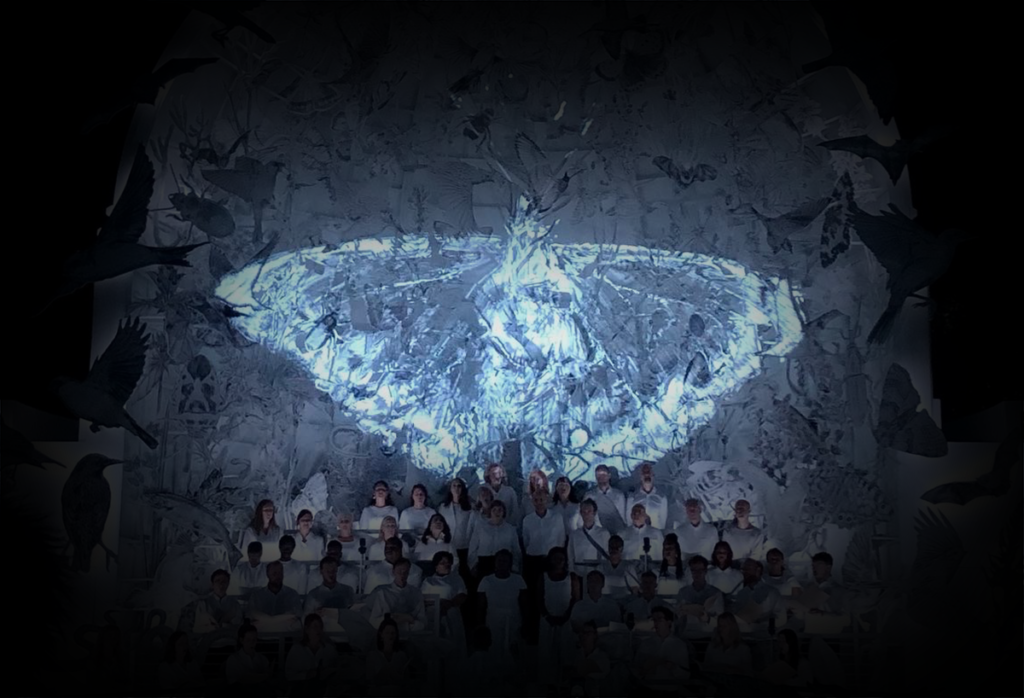
Earlier this year I was asked by Luke Halls Studio to work with the team on a project by Es Devlin called come home again. The piece / sculpture is designed to bring awareness of 243 at risk species of nature and wildlife throughout the UK.
I was brought onboard to look after the work flow to projection map onto the sculpture from generating the UV templates for the animators through to laser scanning the sculpture and remodeling elements to enable accurate projection lineup.

The sculpture was built by Stageone based on the architecture of the dome of St. Paul’s cathedral and was adorned with cutout drawings of the 243 species all had drawn by Es. In addition to the projection element there was also a choir performing with a sound scape in addition to Es taking about the species a la Marks and Spencer style advert. And lastly there was a lighting element thrown in for good measure to backlight the decoupage style set pieces.
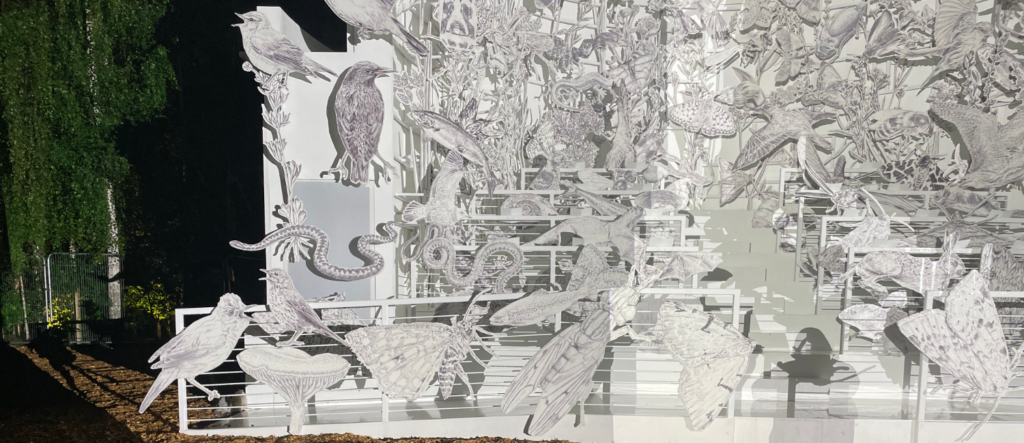
The whole process started with myself receiving a Rhino3d model of the sculpture and having a chat with Charlie who was leading the video design on this to figure out how to breakdown the model and UV it so the content templates would be flexible and also easy to decipher.
The model as split into constituent parts consisting of the Base model to which all the species were mounted and each species split out, these were, lichen, birds, insects, mammals, plants and fungi. Each species was given its own UV map which when all collected together created the map for the whole projection mapping of the physical structure.
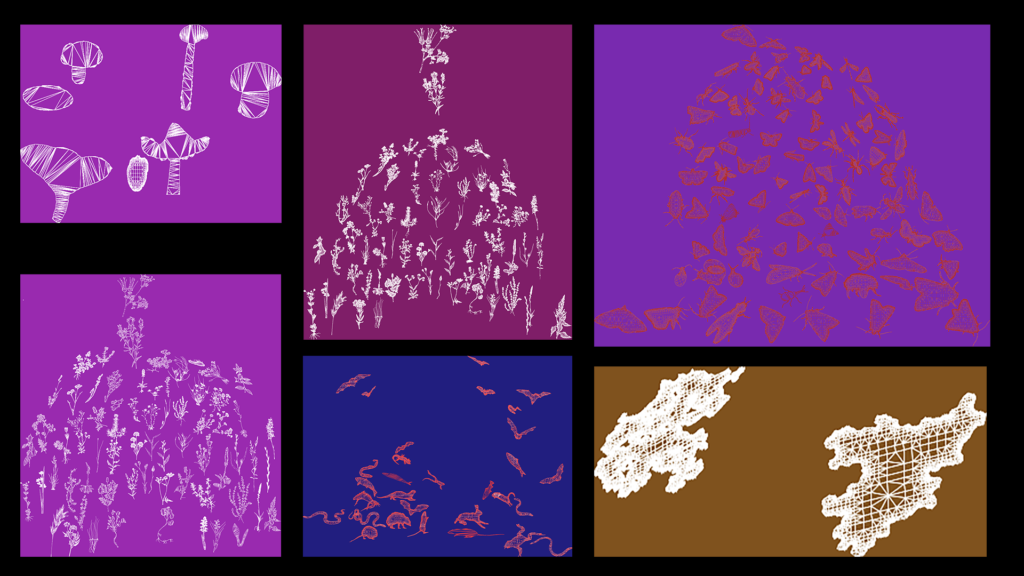
The rhino project was pretty busy, not only did it have all the 3d bit that we needed it also included every single nut, bolt, mounting bracket, EVERYTHING. This took quite a bit of cleanup to split out the parts we needed and the parts we didn’t need and reduce the model down to few enough polys so the media server software could run smoothly. This was a really long process and I’m still trying to find more streamlined ways to make this quicker. It was only after isolating and grouping the species and the structure that I could generate the above UV maps from the cleaned up 3D geometry.
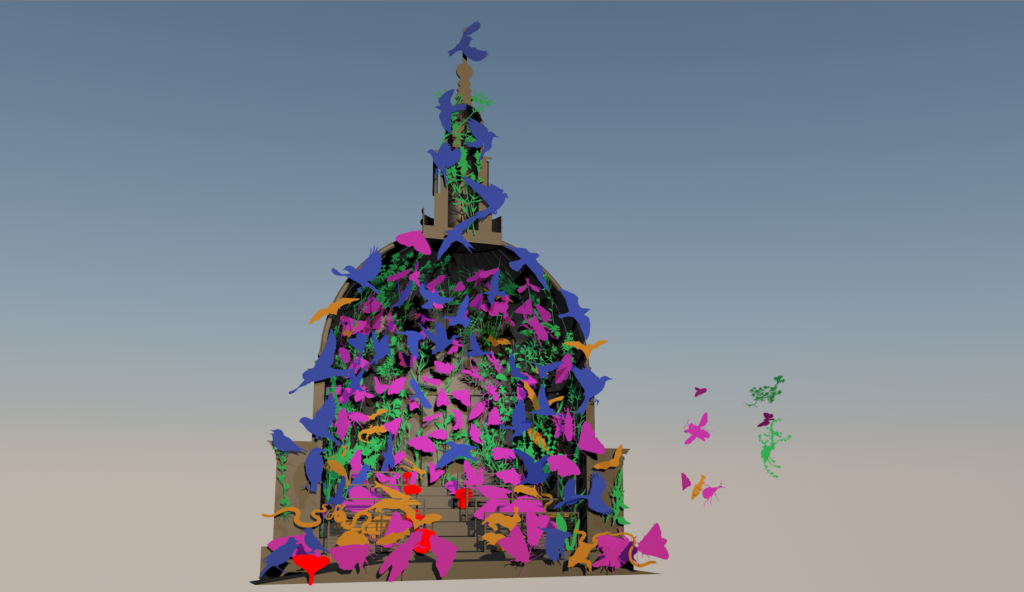
At this point we had two versions of the sculpture, one was the virtual 3d model and the other was the as built real world structure. In my experience, temporary structures of this scale and complexity are very rarely the same as the drawings they were built from. For this exact reason, a few years ago, I invested in a laser scanner (Faro s70) to specialise in laser scanning for projection mapping. Once the structure was finished I got my friend and colleague Paul to come down with the scanner to get an accurate 3d scan of the as-built structure.

The laser scanner basically takes millions of measurements from a point and builds up an accurate representation of the surroundings called a point cloud. Once the data has been captured and processed into a point cloud viewing software of choice you can move the virtual camera around the 3d scene and view the capture from any perspective which really pleasing to look at. Below you can see the limits of the capture which is 70m so that’s why some of the background elements disappear into the ether, anything outside of a 70m radius of the capture is lost.

From the point cloud data I spent quite a bit of time cleaning this up so I only had the data of the structure and the animal cut-outs to then turn into a mesh for use in Cinema 4d. From the real world scan and the existing model I could then overlay the scan data on top and see how closely things matched.
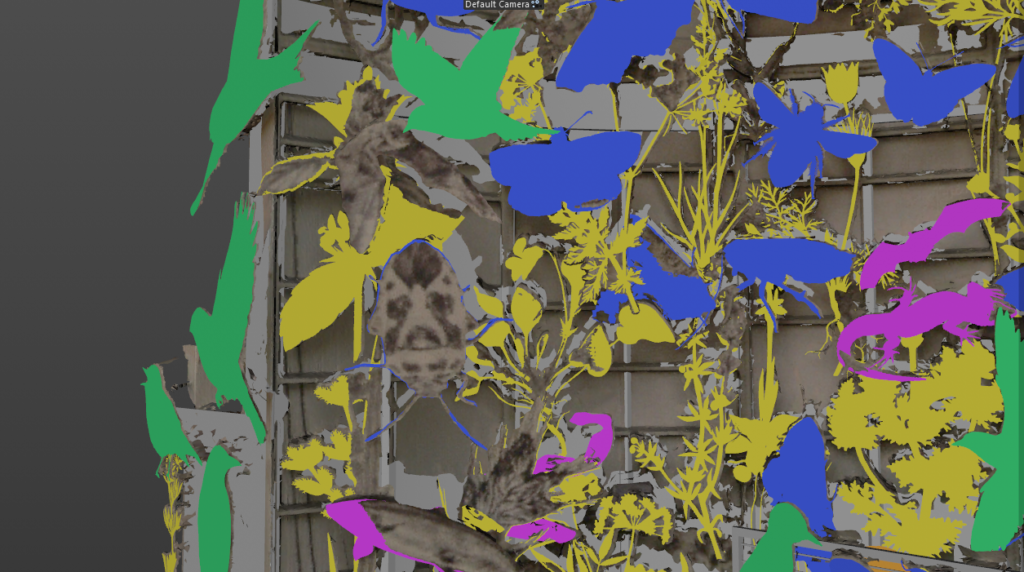
As expected the CNC cut structure of the dome matched the scan data incredibly well. When it came to matching the animas, insects and mammals etc almost everything. Needed a nudge into place, not by much most position and rotations were off a little and some cutouts were swapped around completely. It took 2 days to painstakingly check and tweak the position XYZ and rotation XYZ do each of the 243 species until each position matched the scan data.
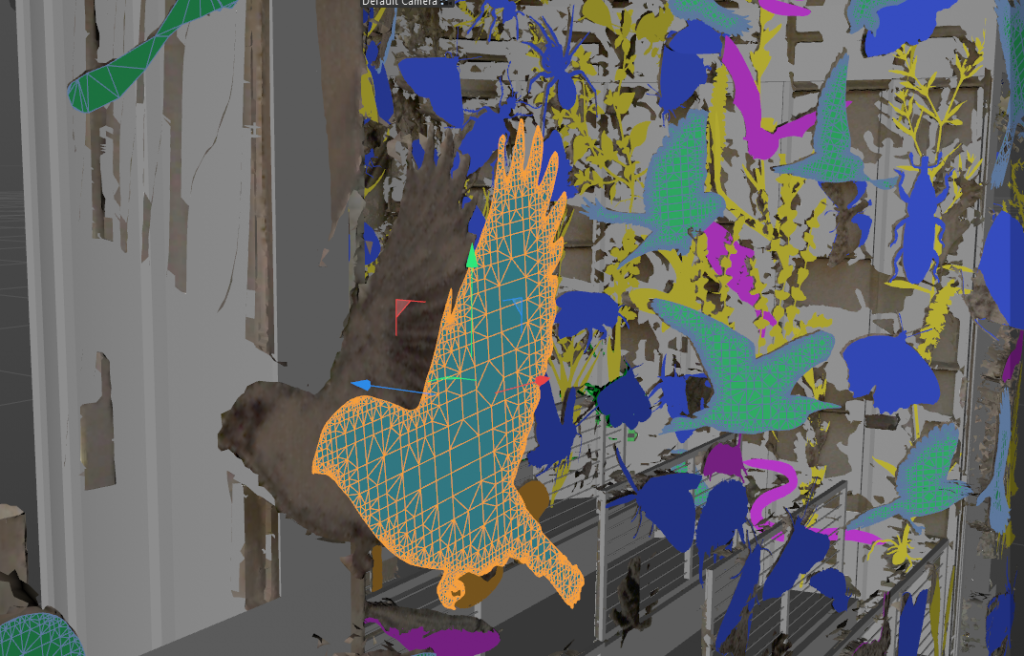
Once all the 3d to scan data was done i generated different color lineup grids for each species and a wireframe from the 3d mesh to help with the projection lineup. CT were providing the projectors for the event and Nico was in charge of servers and lineup. With the scan and the modeling i was expecting that it should be straight forward, but with all these things you never really know until you you get all the hardware software and structure together. On the first projection alignment pass it popped straight in, there was no reason for me to double that it was going to “click in”
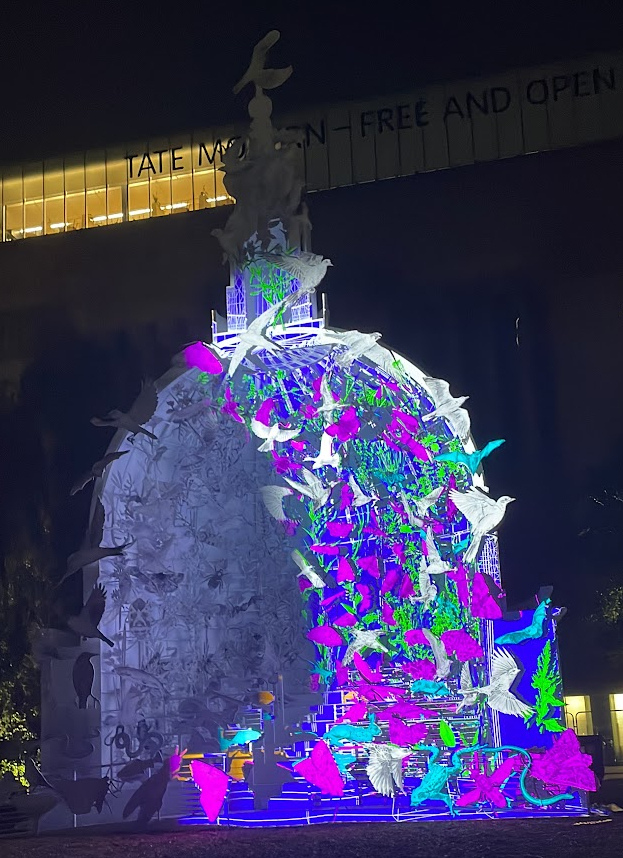
I did an initial test with disguise and quick cal to make sure the whole process worked than I handed it over to Nico to finish and tweak the alignment to which he did a great job. All along side this Zakk from Luke halls studio was programming the show on a parallel copy of the project, so once we had a decent alignment we were able to preview bits of the show with rest of the team.
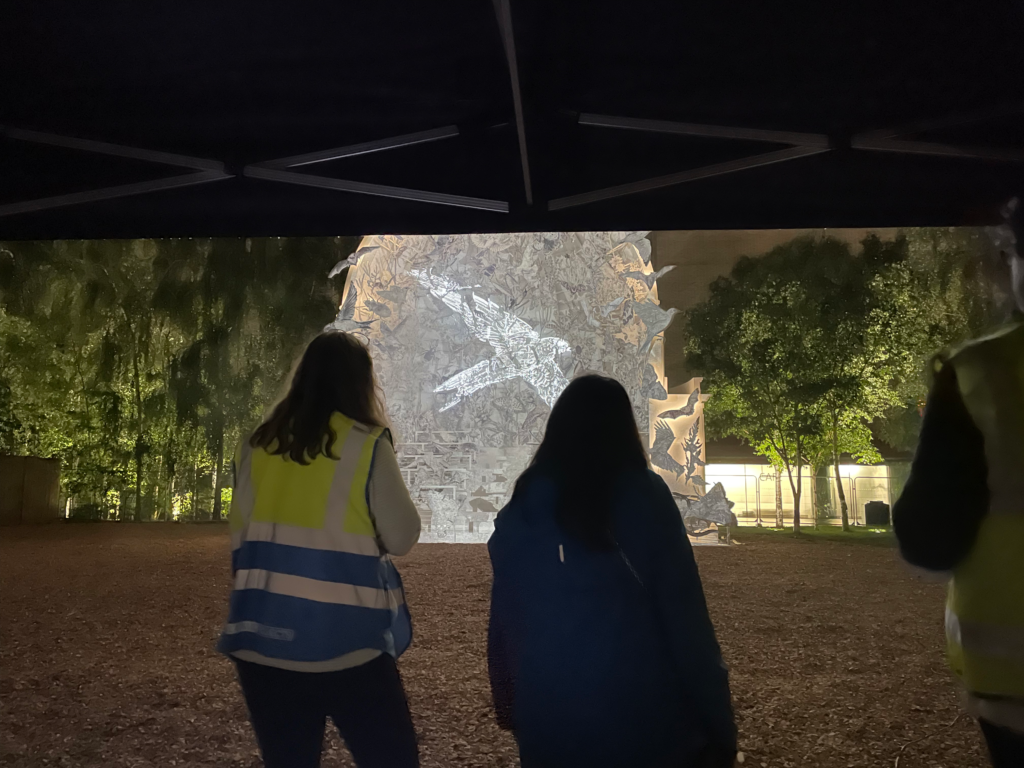
It was a great project to work on and great to be working with mates and colleagues who really care about the job. I never actually got the chance to see the finished show as i had to leave London onwards to the next job, on all accounts and from pictures it looked great :).
